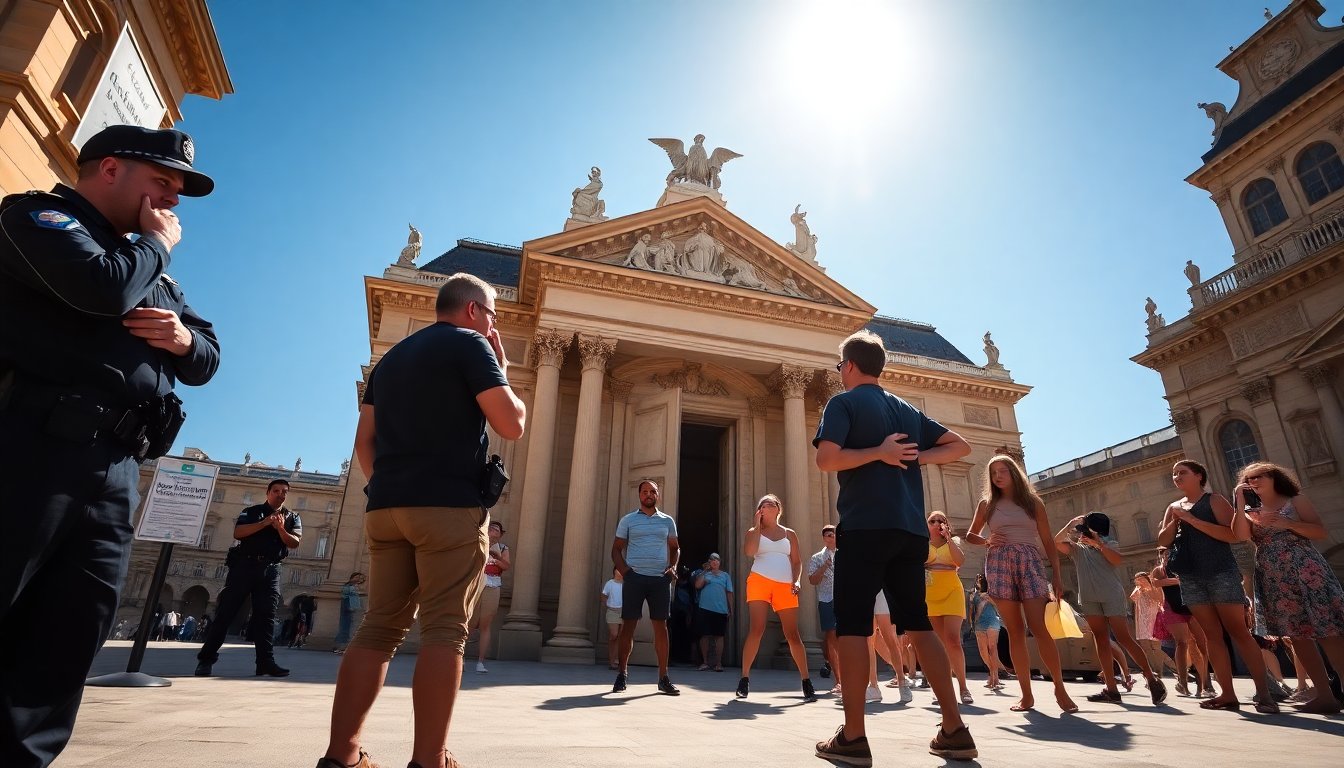Table of Contents
In an astonishing incident that unfolded in broad daylight, thieves targeted the renowned Louvre Museum, making away with priceless jewelry from the esteemed Apollo Gallery. This heist highlights not only the audacity of modern criminals but also raises serious questions about security at one of the world’s most famous cultural institutions.
The Apollo Gallery, home to the illustrious French crown jewels, became the scene of this audacious theft. Within a mere seven minutes, the perpetrators executed a meticulously planned operation that left museum staff and visitors in disbelief. The stolen items, adorned with thousands of diamonds, showcased extraordinary craftsmanship and historical value.
A closer look at the heist
The alarm was raised when museum security noticed unusual activity. However, by the time help arrived, the thieves had vanished into the streets of Paris, their identities still unknown. This swift operation was executed with a precision suggesting extensive planning. Eyewitnesses reported seeing a group of individuals behaving suspiciously near the gallery, but the rapidity of their actions caught everyone off guard.
Security measures and vulnerabilities
This incident has sparked significant discussion regarding the security protocols in place at the Louvre. As one of the most visited museums globally, it is expected to have stringent measures to protect its invaluable collections. The Apollo Gallery, with its glittering treasures, should have been a fortified location. Yet, the ease with which the thieves breached its defenses raises serious concerns.
Experts in museum security emphasize that while physical barriers are essential, the human element also plays a critical role. Continuous monitoring and rapid response systems are crucial in thwarting such swift operations. This heist serves as a stark reminder that even the most iconic landmarks can fall prey to criminal activity if vulnerabilities are not adequately addressed.
The aftermath of the theft
In the wake of this brazen robbery, the Louvre has initiated a comprehensive review of its security measures. The museum’s administration faces pressure to enhance safety protocols to prevent future incidents. This includes evaluating the effectiveness of surveillance technology, employing additional security personnel, and possibly revising visitor access patterns.
Furthermore, this theft has left the public in shock, as these jewels are not just valuable due to their material worth but also represent a significant part of French heritage. The cultural impact of losing such artifacts cannot be overstated, prompting calls for greater efforts to protect national treasures.
Public reaction and cultural significance
The audacity of the theft has sparked outrage among art lovers and historians alike. Many view the crown jewels as symbols of national pride, and their loss is deeply felt across the country. The incident has ignited debates about the responsibilities of museums in safeguarding their collections, especially those of profound cultural significance.
In addition to public outcry, the police have launched a manhunt for the suspects. Investigators are exploring all possible leads, including reviewing surveillance footage from nearby areas and interviewing witnesses. The hope is that someone may have noticed something that could help identify the thieves.
This robbery at the Louvre serves as a chilling reminder of the vulnerabilities that even the most revered institutions face. As authorities work tirelessly to recover the stolen jewels and enhance security measures, the art community watches closely, hoping for a resolution to this distressing chapter in the museum’s history.


